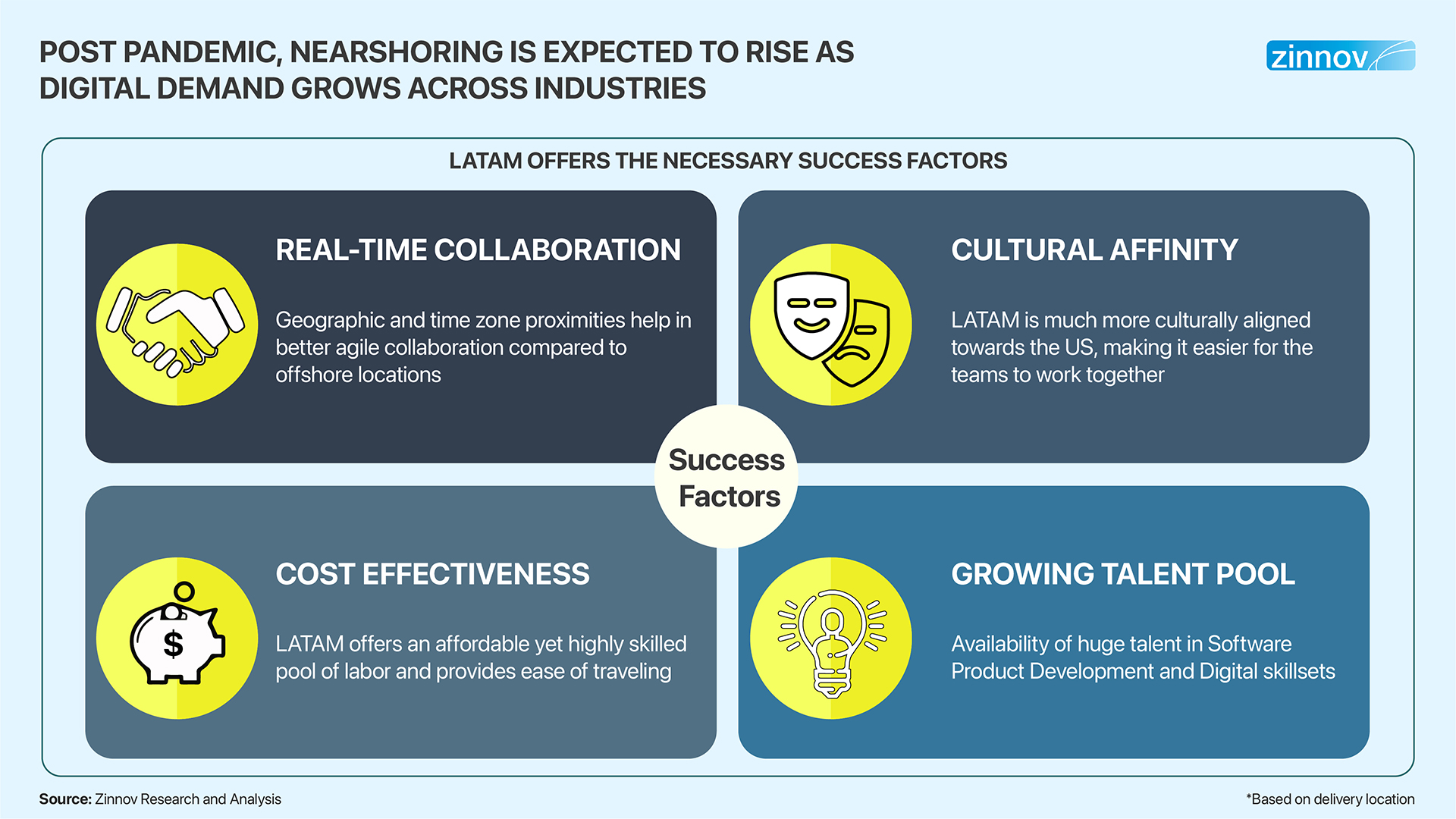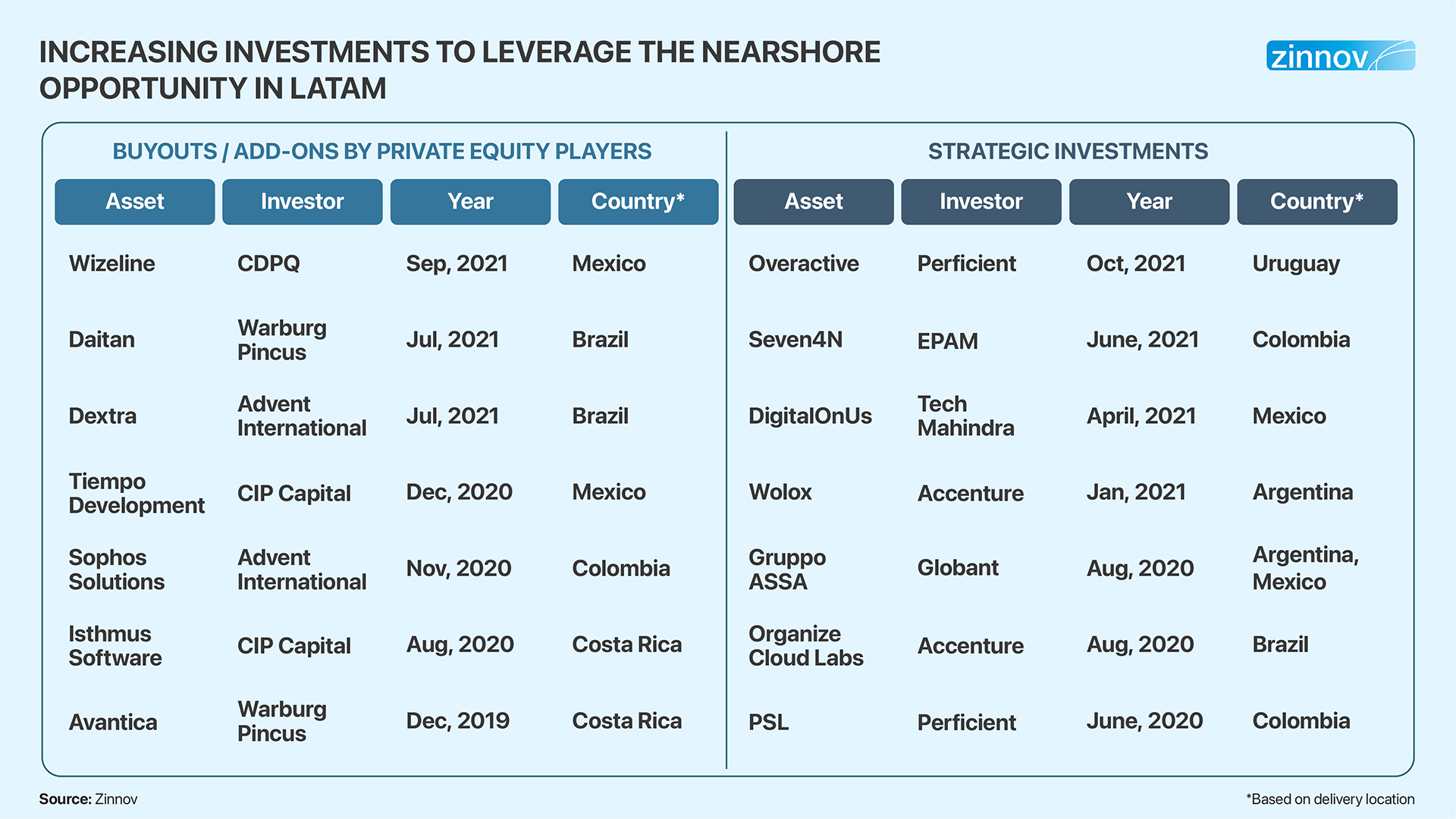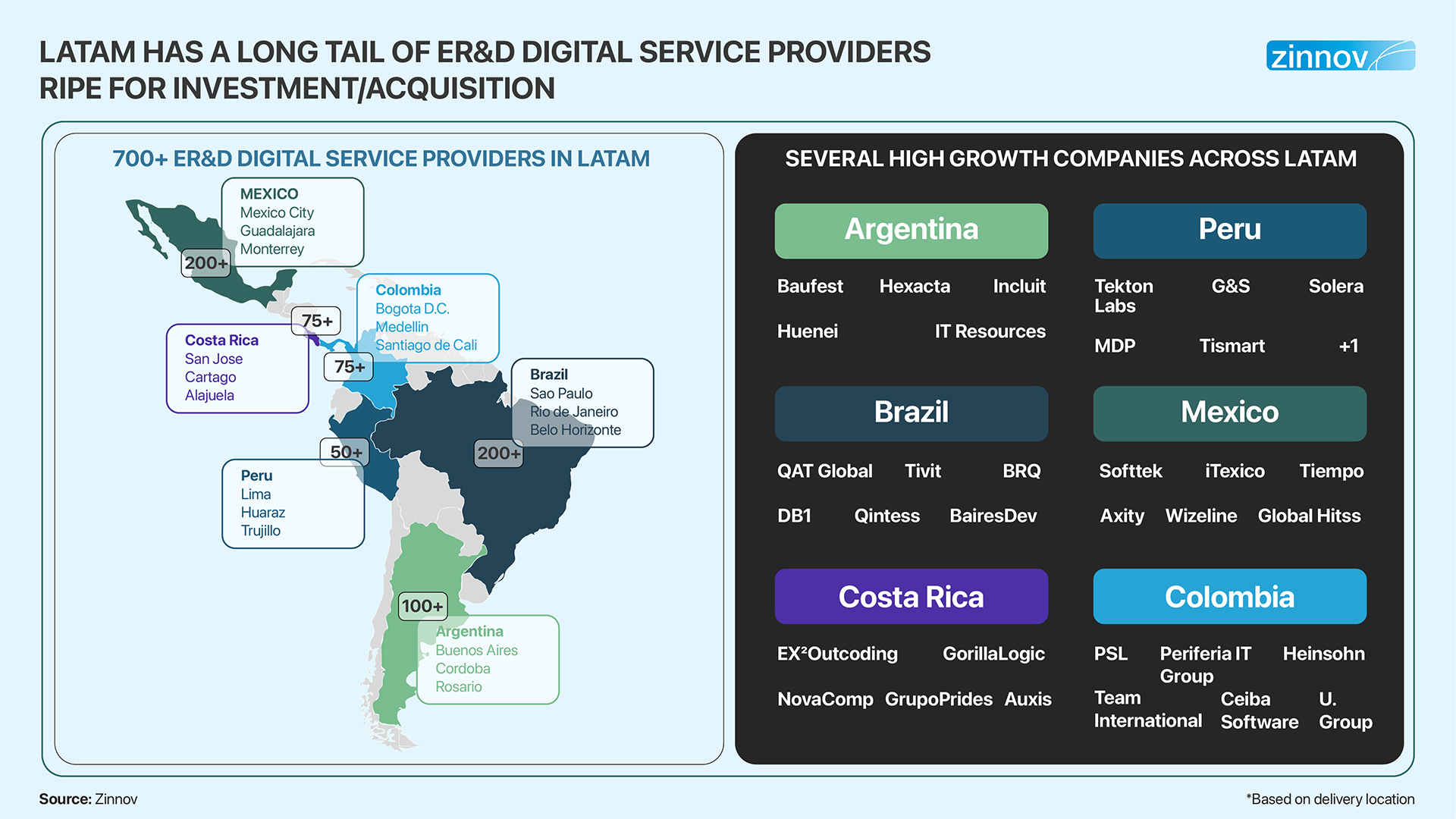|
|
COVID-19 has had a profound impact on our collective futures. It forced the world to adapt to a “futuristic way of working” faster than anybody could have anticipated. Today, enterprises are adopting the decentralized way of working by expanding in various geographic locations to leverage the unique talent and cost advantages offered by each country. In fact, COVID made companies realize that having a heavy reliance on a single geography or centralized operations can prove catastrophic in times of crises. This decoupling of work from the workplace, the increased shift to remote or hybrid work models, have forced several US corporations to reduce dependency on outsourcing core business processes to countries halfway across the world. Instead, they are looking at opportunities closer to home, to decrease time differences along with cultural and language barriers – major downsides to offshore outsourcing. A key trend that has emerged in the face of the pandemic has been the rise of nearshoring in Latin America (LATAM), due to its proximity to the US, growing talent pool, cost-effectiveness, and cultural affinity.
Zinnov’s recent geographic market analysis highlights LATAM’s potential as an up-and-coming software design and development hub. Zinnov’s expertise as a strategic advisor to Service Providers (SPs) and global firms that want to expand to LATAM, and key Private Equity (PE) firms in search of SPs based out of LATAM, have enabled us to identify the key success factors behind LATAM becoming a hotbed for nearshore investment. Here are the prominent reasons.

When it comes to IT outsourcing, Agile or the Scrum methodology plays a key role. It involves constant collaboration with key stakeholders to plan, execute, and evaluate every stage of the project. For instance, one of the biggest challenges faced in outsourcing to Asia is the stark difference in time zone. However, these methodologies work best for LATAM countries as they share similar time zones with the US and Canada, with a negligible time difference. This makes digital collaboration easy and reduces any significant delays in project delivery, thereby avoiding additional costs.
In fact, if an employee or team member wants to visit the site, there is a substantial decrease in the hours spent on traveling. One can easily set up a morning visit and return to their respective countries by midnight. For instance, the up-and-coming software development hubs such as Mexico City and Jalisco, are connected to the US via interstate routes.
Owing to LATAM’s cultural proximity to the US, the chances of intercultural misunderstandings are minimal, due to similar working styles and business approaches. This helps in understanding the customer mindset better while delivering the desired results. Additionally, large portions of potential developers are fluent in English and Spanish. Thus, intercultural communication between foreign clients and LATAM SPs is smoother and helps reduce any delays caused due to miscommunications in the longer run.
LATAM demonstrates a cost-effective pricing structure without compromising on the quality of services. The available talent showcases exceptional design and development skills, at par with their US counterparts, at a significantly lower cost. Outsourcing to LATAM not only reduces the amount spent on salaries but also reduces the cost of travel remarkably.
Certain LATAM countries have changed their official currency to the US Dollar to stabilize their economies and reduce any transaction costs with the aim to encourage larger players to set up localized offices. Some of these countries include Ecuador, El Salvador, and Panama.
There is an immense shortage of skilled talent in new-age technologies across the globe, especially with the unprecedented wave of digital transformation sweeping across industries. To combat this talent lacuna, LATAM-based universities have been investing heavily in English and STEM (Science, Technology, Engineering, Mathematics) courses, and encouraging exchange programs with North American universities, to develop a digitally skilled talent pipeline. Also, as the effects of The Great Resignation trickle down into organizations with skyrocketing salaries in the US, LATAM has an edge – it houses a great number of developers and UI/UX designers at affordable rates, for demonstrating a similar quality of work. For example, a country like Mexico accommodates more than 400K software product development engineers.
With its abundance of tech talent and an increasing number of Digital Engineering SPs, LATAM has witnessed rising traction from ER&D spenders and PE investors alike in the recent years. To create antifragile businesses, marquee players like Accenture, Wipro, HCL, IBM, and EPAM have set up Centers of Excellence (COEs) in this region to deliver high value for their parent organizations.

Additionally, LATAM-based Digital Engineering SPs such as Globant (Belatrix Software), EPAM (Seven4N), Tech Mahindra (DigitalOnUs), and more have been acquired by global firms. In addition, PE firms are pivoting their investment focus towards LATAM by acquiring LATAM-based firms or helping their existing portfolio companies to open nearshore centers. Furthermore, mid-sized SPs like Xoriant and Altimetrik are expanding to the region by setting up their own development centers to support their US-based clientele.

Zinnov’s in depth analysis of the market has helped identify an extensive list of assets ripe for PE and strategic investments, transforming LATAM as the nearshoring pivot in the post-pandemic era. The region houses more than 700 Digital Engineering SPs, especially in countries like Mexico, Brazil, Argentina, Colombia, and Costa Rica. In addition, its evolving talent pool, cost advantages, and geographic, linguistic, and cultural proximities, offer a myriad of opportunities for investors to leverage from. Leaders need to maneuver the aforementioned factors to generate significant value over the next few years.